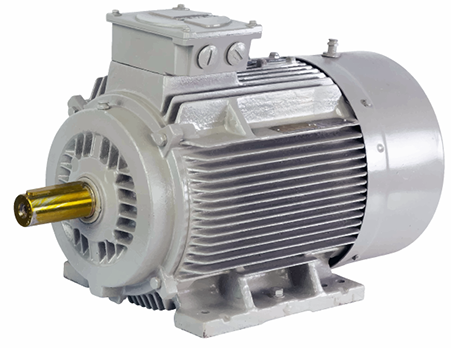Electric motors
Regulations set a minimum energy efficiency level

All electric motors are subject to Canada’s Energy Efficiency Regulations, which set a performance standard for their energy consumption. This helps to eliminate the least efficient products from the Canadian market.
Electric motors and energy efficiency
Alternating current induction motors are the most commonly used motors in Canadian industry. These motors are usually purchased in sizes ranging from 1 to 500 horsepower.
Many manufacturers offer motors that are more efficient than minimum standards required by regulations in Canada. This is good news. Even a small improvement in motor efficiency can add up to big savings for your business.
The National Electrical Manufacturers Association (NEMA) has developed a set of criteria to identify high-efficiency motors. When shopping, look for units that carry the NEMA PremiumTM label. These consume less electricity, are designed for optimum efficiency, and are quality-built motors.
NEMA Premium motors can replace the motors in most original equipment manufacturers’ products. They are particularly well suited to motors that are used for more than 6,000 hours per year and situations where reliability is critical.
How much can you save?
In a word, lots. A motor’s purchase price accounts for about three percent of the unit’s total lifecycle cost. The remainder of the money you spend goes to pay for electricity. So, even a small increase in energy efficiency of one or two percent can make a huge difference in motor operating costs.
A NEMA Premium motor costs more to buy than a standard model. However, it has been proven to pay for itself within a few years of continuous operation.
Canada’s motor selection tool, CanMOST, can help you determine how much you can save by choosing an efficient motor.
Compare current models of electric motors using our searchable product list.
For a comprehensive guide, download NRCan’s Electric Motors: Energy Efficiency Reference Guide.
Buying tips
Pick the right size for the job.
Motors are most efficient when they operate at between 75 and 100 percent of capacity. It is therefore critical that you select the right sized motor for the job and do not deliberately choose an oversized motor to accommodate for future expansion.
Check your speed.
Some energy-efficient motors run faster than standard units. This can negate potential energy savings. Select a new motor that has a full-load operating speed less than or equal to that of the old motor.
Incorporate a variable frequency drive.
Variable frequency drives regulate motor speed to match load demand. The benefit: energy savings of as much as 50 percent in some applications.
Keep your eye on the power factor.
A motor’s power factor is the ratio of real power (the power being used by the motor) to apparent power (the power you pay for). Motors that run at the peak of their rated loads have high power factors and are particularly efficient. Conversely, lightly loaded motors are highly inefficient. When you choose a new energy-efficient motor, make sure the new motor’s power factor is higher than that of the old unit.
Operating tips
Control your motor.
Save more energy by using a variable frequency drive to vary the speed of the motor.
Lubrication counts.
Using premium lubricants can provide energy savings. They can also protect against motor deterioration.
Power quality matters.
Check your electric supply systems to help eliminate issues such as harmonics, current leaks and incorrect voltages that reduce motor reliability and efficiency. Improving power quality can reduce motor load, improve reliability and prolong motor life.
Think prevention.
A routine program of minor repairs, lubrication and inspection can maintain motor efficiency, prevent or delay failure and reduce downtime.
Know your belts.
A belt connects a motor to its load. While a V-belt is the most common belt-connecting medium, three other types of belts (cogged V-belts, flat belts and synchronous belts) can offer greater energy efficiency. A cogged V-belt, for example, can reduce energy consumption by as much as 10%. Also, check the belt’s tension regularly for best performance since loose belts may slip and waste energy.
Page details
- Date modified: